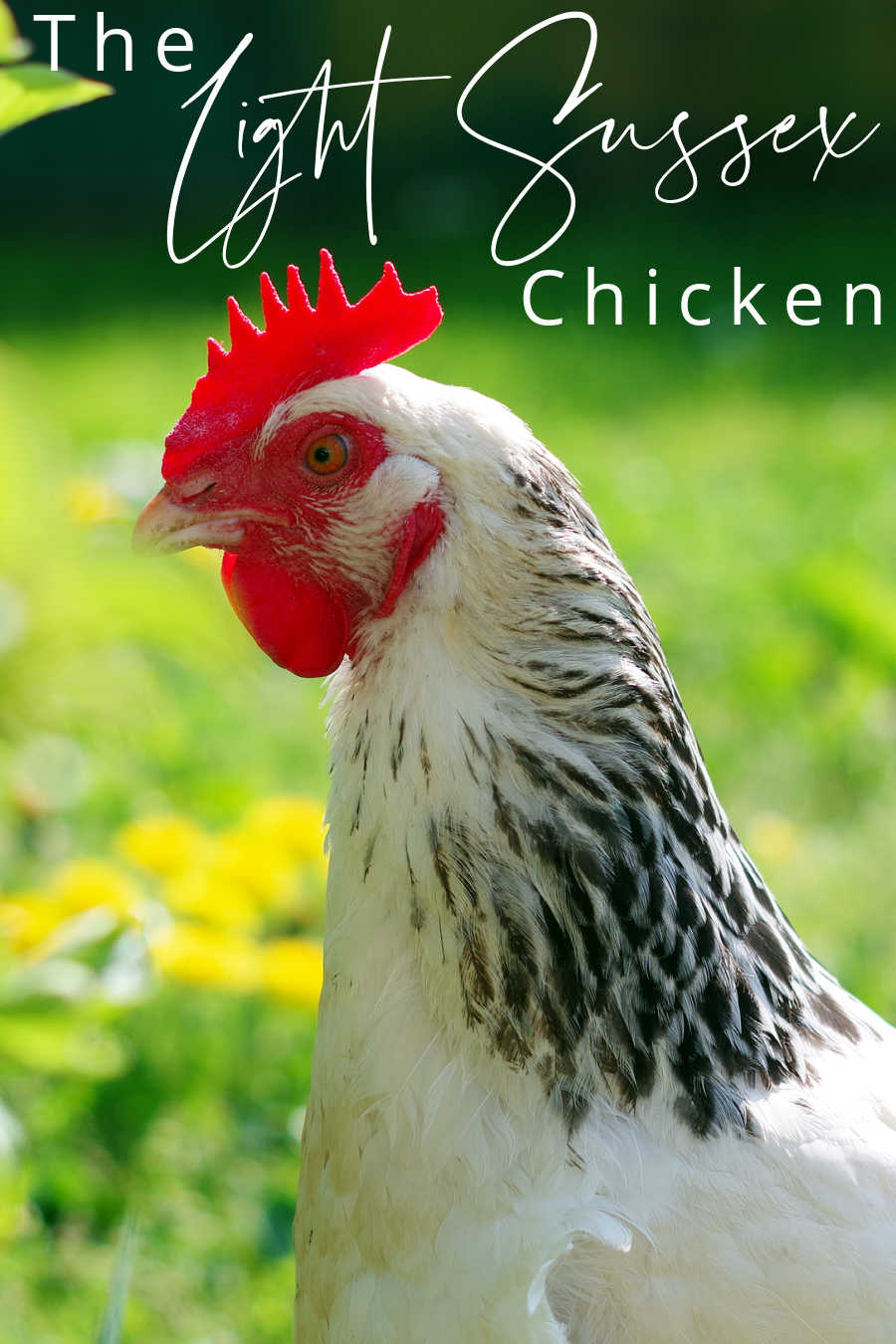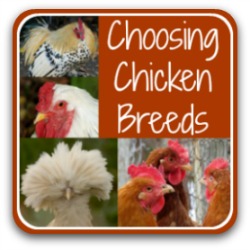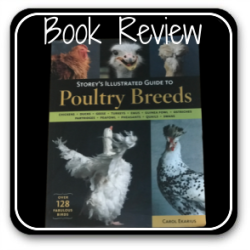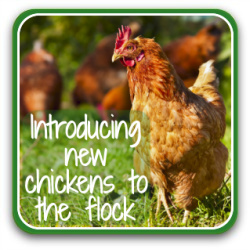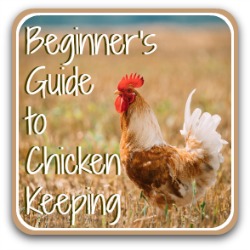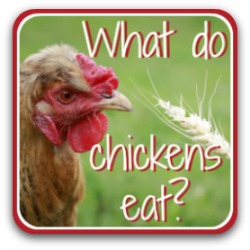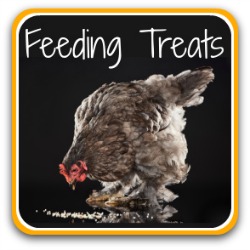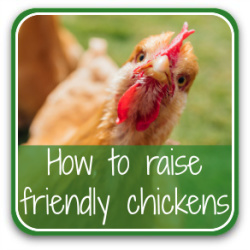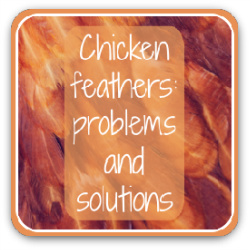The Light Sussex chicken: the right breed for your flock?
Regal in appearance, kindly in nature, easy to care for. Could the Light Sussex be a good match for your flock?
I've had both Speckled and Light Sussex chickens in my flock for several years now, and wouldn't be without them. The photos in this article are all of my own chickens.
A friendly, companionable breed, my experience of the Light Sussex is of a good forager, capable of looking after themselves but who also like the company of both other chickens and humans.
In terms of care they will – as will any chicken – appreciate a safe place to roost and some ground in which to range.
They're not susceptible to any particular diseases, though obviously everyday biosecurity measures should be taken.
They will continue to produce large, light brown eggs for most of the year.
Would I recommend the Light Sussex for a family flock? Absolutely!
The Light Sussex chicken at a glance.
- A stately, impressive-looking, old English heritage breed which copes well in the cold
- They have a kind and curious disposition - a very family-friendly choice
- A reliable layer of large, prettily tinted light brown eggs
- Good forager, so makes a "thrifty" hen
- Not a very broody breed – if you're looking for a broody hen, try a Silkie.
- Please bear in mind that individuals can differ from the general breed characteristics.
History.
The Light Sussex is known as a "heritage breed", one of the many different Sussexes bred from game fowl brought to England by the Romans as long ago as AD 43. The original birds were bred together with native breeds and created first the Speckled Sussex and later, the Light.
So as the name suggests, the Light Sussex originated in Sussex, England. It has been recognised as a standard breed there since the early 20th Century and was accepted as a licenced breed in America in the 1920s.
However, it's still much more readily available in England than in the US.
The Light Sussex was bred to be a "dual purpose" breed, producing a steady number of large eggs and a good amount of meat, to cope with public demand.
In the 1940s, though, it was replaced by specially bred broiler chickens, who mature unnaturally quickly, so were more in demand commercially.
The Light Sussex remains one of the best breeds for both eggs and meat, but matures too slowly to be regarded as a good commercial chicken.
So – luckily – the breed's popularity means it's remained and celebrated as both a reliable, family friendly backyard chicken, and a dashing show bird.
Physical appearance.
As a newly-hatched chick, the Light Sussex is the typical yellow, fluffy ball of cuteness most people think of when they imagine a baby chicken.
Even at that young age – this chick of mine was just a couple of days old when I took this picture – they're friendly and have an interested, inquisitive look.
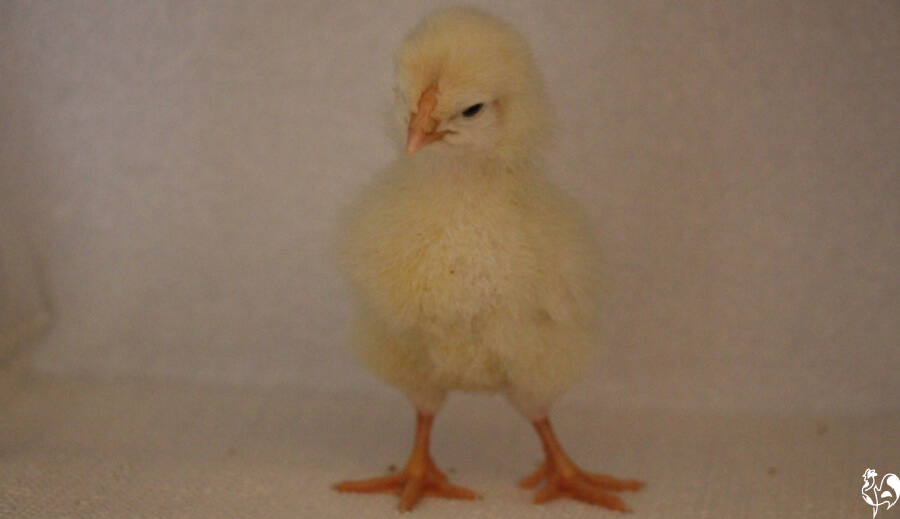 As a chick, the Light Sussex is the typical yellow ball of fluff.
As a chick, the Light Sussex is the typical yellow ball of fluff.As they grow, the characteristic black neck, wing and tail feathers begin to show fairly quickly. You can just see them starting to develop on this same chick only ten days later...
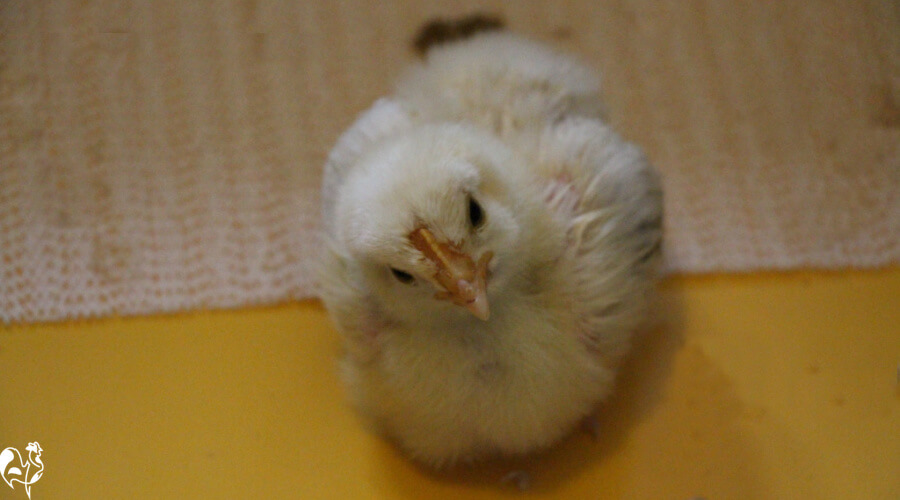
Here, just another three weeks later, the same chick is losing the fluffy down and the black markings are growing in with the feathers.
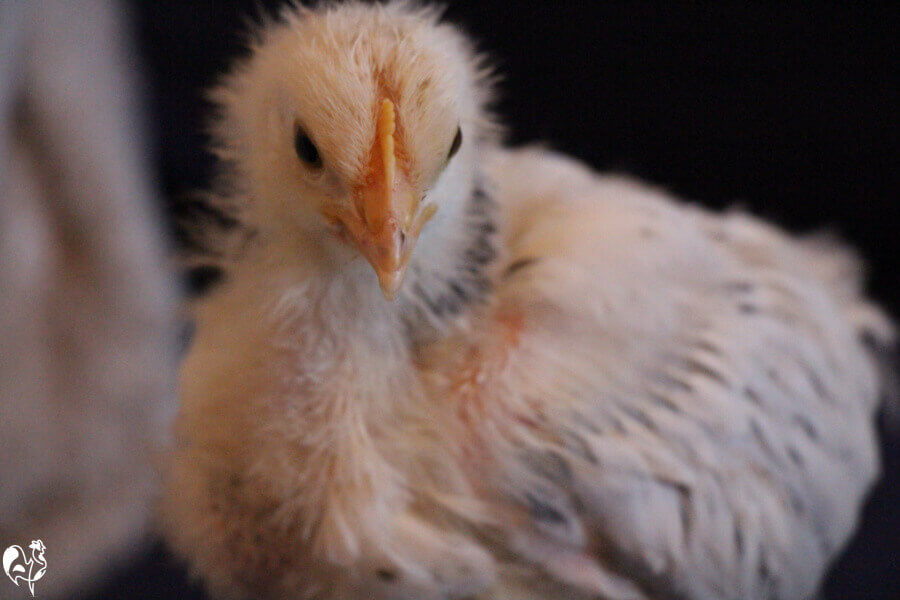
Here's our Light Sussex chick again, aged two months. The neck feathers are now developing well, and the tail feathers are starting to develop. As an adult, the tail feathers will have a beautiful blue sheen in the sunlight.
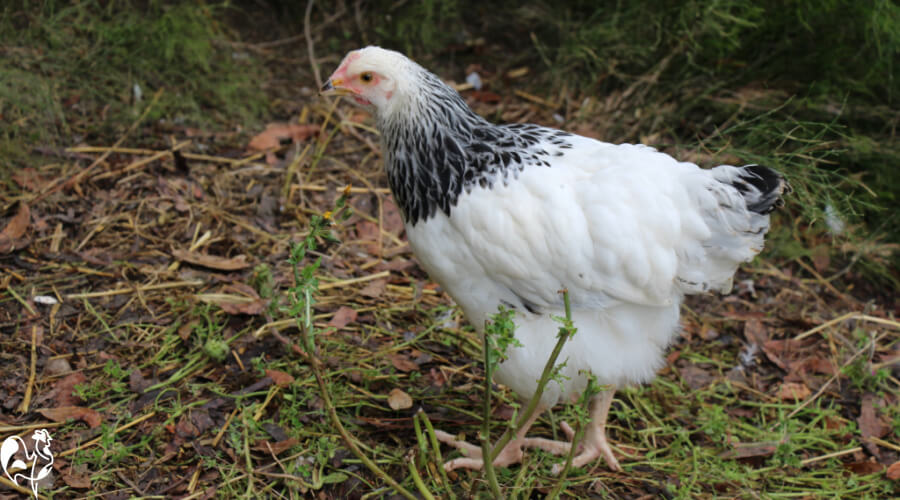
As an adult, the Light Sussex's black feathering at the neck (the hackle feathers), wings and tail, together with its graceful stature, make it a very striking breed.
This is the same chick – who turned out to be a rooster!
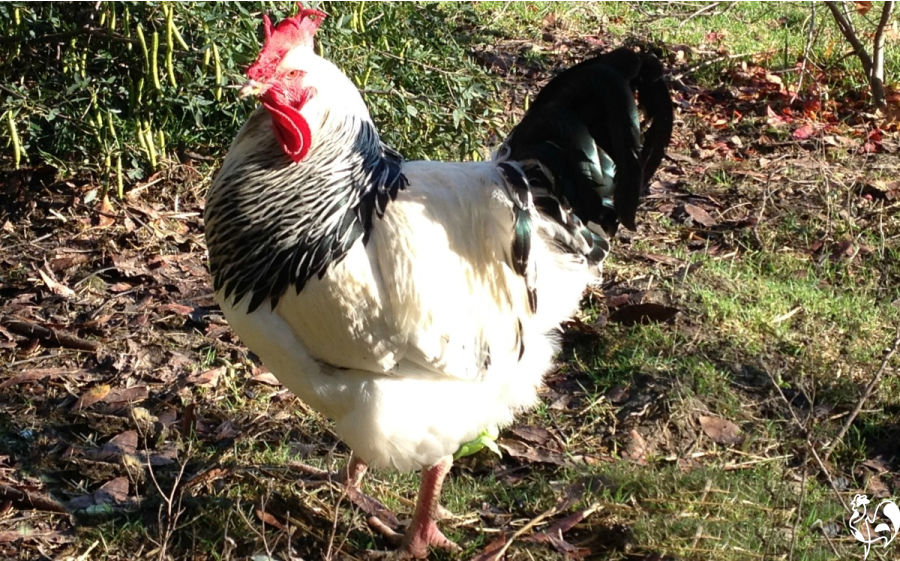 My Light Sussex hen, Sassy, who turned out to be a rooster!
My Light Sussex hen, Sassy, who turned out to be a rooster!Notice the bright orange eyes which are another characteristic of the Light Sussex chicken, as well as the short, feather-free legs, and the feet set quite wide apart.
The lack of feathers on the legs and feet makes them unlikely to harbour mites, and means they're very easy to care for.
What's the Light Sussex personality like?
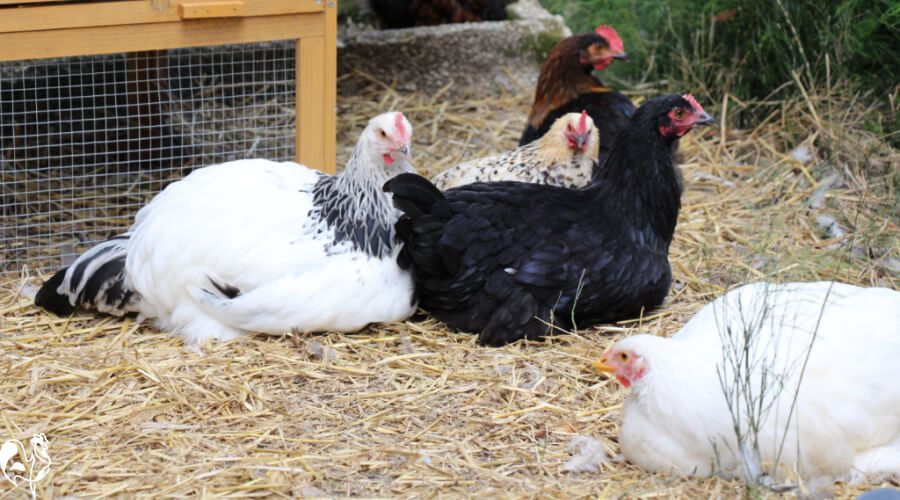 Equally at home as a companion for both other chickens and humans.
Equally at home as a companion for both other chickens and humans.- As we've already seen, the Light Sussex is a good choice as a large breed family chicken.
- Calm, friendly and adaptable to any situation.
- Generally a confident breed, comfortable with being handled.
- Not known as a noisy bird, so a good choice if you have neighbours close by.
- Always curious, so they'll spend time following you around the garden as you work, and they'll investigate new surroundings without fear.
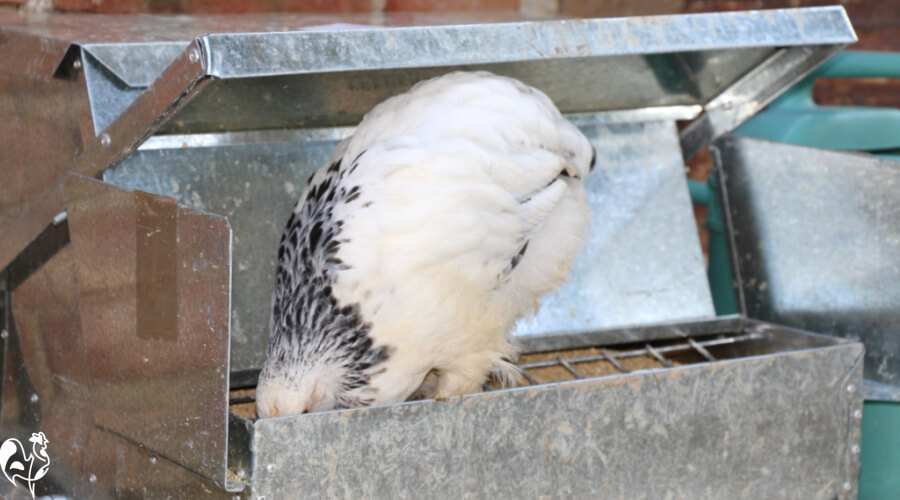 Curious and entertaining! My Light Sussex investigates the automatic chicken feeder - from the inside!
Curious and entertaining! My Light Sussex investigates the automatic chicken feeder - from the inside!What about Light Sussex eggs?
This chicken breed lays large, light coloured eggs. They can vary in tone from light brown through cream to an almost pink hue.
Unusually for pure bred hens, the Light Sussex will lay virtually all year round. Mine don't stop even in the hardest of Italian winters, and they've never had extra light in the coop.
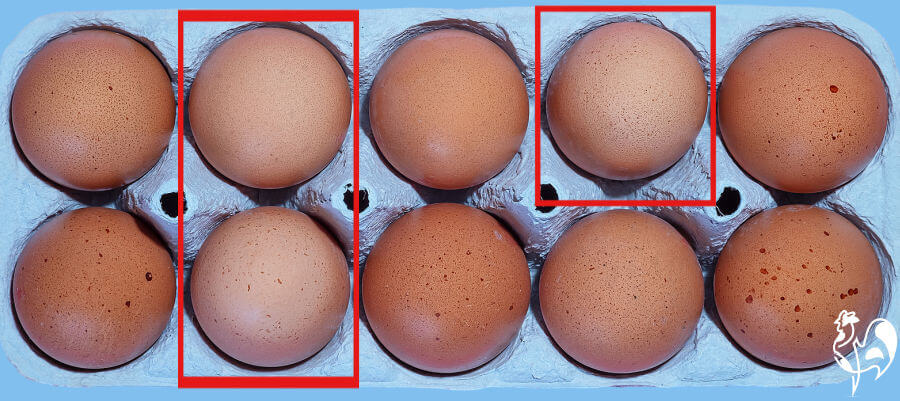 Light Sussex eggs (highlighted) are light brown, and can seem to have a light pink hue.
Light Sussex eggs (highlighted) are light brown, and can seem to have a light pink hue.Choose the Light Sussex chicken if you...
- want a beginner chicken breed which is quite low maintenance yet friendly and good-natured, tolerant of children's attentions, like being petted yet can also be independent, and like the company of other chickens.
- have cold winters. They're very cold hardy, and will also deal with summer heat well as long as they have a shady place to sit and dustbathe, and different ways to keep cool.
- need to have chickens that won't even try to fly. The Light Sussex is much too heavy.
- haven't got a huge amount of space. Although they enjoy free-ranging (and will tend to breed better if they can), they're also tolerant of more confined spaces.
- want a reliable laying hen who will provide you with a steady supply of large eggs.
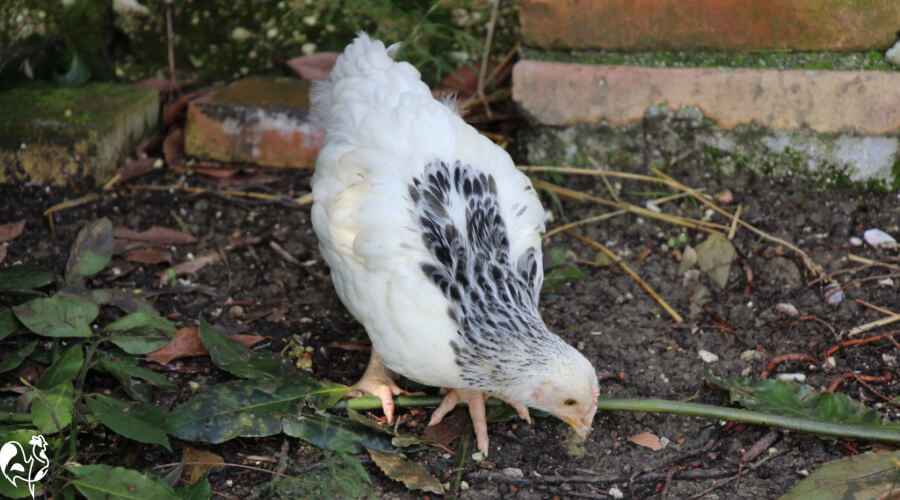 The Light Sussex - a good forager
The Light Sussex - a good foragerAnything that might be a problem?
- They're such accommodating chickens that they're often bottom of the pecking order, and can be the subject of bullying, particularly if you have some Red Stars in the flock.
- They're large breed chickens, and can put weight on if they're given too many treats. Be aware that foraging, together with their usual feed, means they don't need much else.
Where to buy.
- As with any poultry, buy from a reputable breeder. There are a lot of chickens out there described as a specific breed when they're actually a hybrid.
- If you want chickens true to the breed, look out for the characteristics described above in the flock of the person you're buying from.
- Make a judgement about the breeder. Someone who is producing good, healthy birds will talk enthusiastically – even passionately – about them.
- Avoid websites such as e-bay or Craigslist. There are some genuine sellers there, but more who will sell you infertile eggs or birds which are not the breed they're supposed to be.
- Also look in poultry magazines for breeders local to you, or go to poultry shows and hunt out the breed stand.
- USA: The Sussex Association in the United States seems to have closed down. However, Greenfire Farms have been breeding and selling the Light Sussex since 2013. Please note: I have not used this supplier personally.
- Cackle Hatchery sells hatching eggs, chicks and adults. See my review of the hatchery, including ordering details, here.
- UK: My Light Sussex hatching eggs were from Cinders Fancy Chicks. Based in North Wales, Sian and Paul will also send eggs throughout the UK.
- Helen's Happy Hens, near Colchester, sells both hatching eggs and chicks. Unfortunately at present her website is down, but her telephone details are available by searching for her on the internet.
Enjoy your Light Sussex chicken!
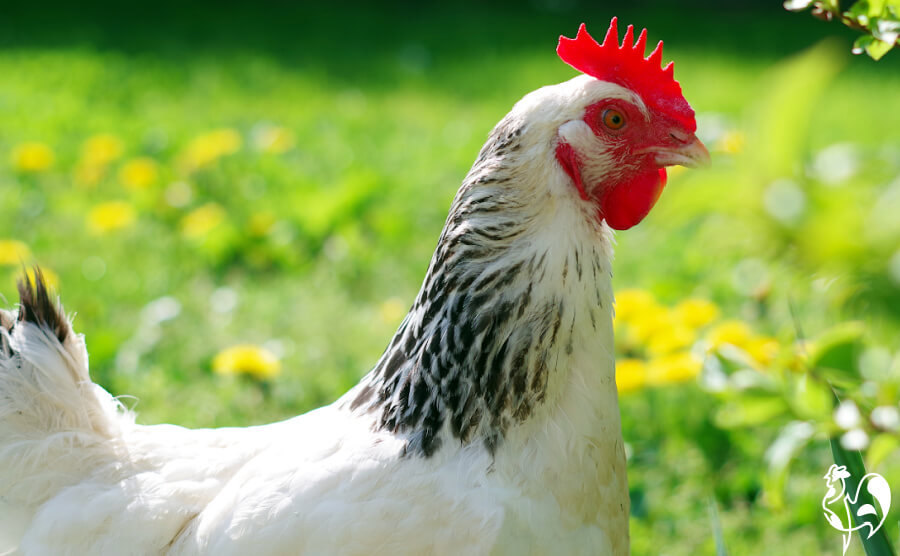
Where would you like to go now?
Sources.
A lot of "facts" you'll find on the internet are often people's individual views, based on inaccurate information repeated from poor quality sources.
The information I provide in this article and others is based not just on my own experience, but on evidenced facts from scientific, peer-reviewed research and books from highly respected and experienced poultry keepers such as Gail Damerow.
Some of the trusted sources I have used in this article are these.
The Light Sussex. Pub. Poultry Club of Great Britain.
Ekarius, Carol: Storey's illustrated Guide to Poultry Breeds. Pub. Storey Books, 2007. (affiliate link).
